
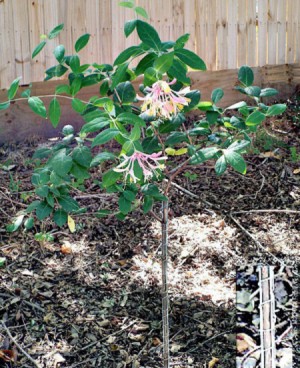
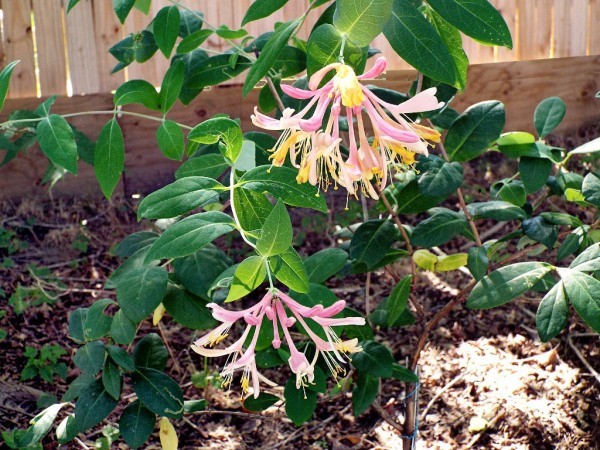
In an earlier post, I mentioned that honeysuckle could be grown as a standard. I looked around and found enough pictures to put together a post on the subject.
Several years ago, I bought a hybrid honeysuckle named Gold Flame. It's blooms are large, showy, and have a delicious fragrance. Honeysuckle is very easily rooted. I like to share, so several of my relatives and neighbors now have their own Gold Flame. I can't speak to the bloom schedule of wild honeysuckle or other hybrids. I can say that the Gold Flame will bloom intermittently from late spring to late fall. And if diligently deadheaded, it will be in bloom for most all of this time.
I gave a sister a rooting. It did well til a flood uprooted it and washed it 300 feet away. Found and retrieved a week later, it was planted next to a chain link fence. Now it is huge and intertwined into the fence, safe from most flooding. Pardon my picture taken with an old, cheap camera.
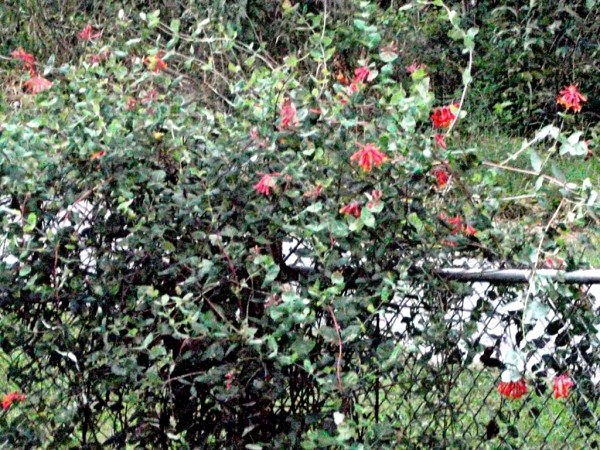
Honeysuckle is quite pliant. Providing one strong, fairly straight cane is to be had, a small established plant could be used for making a standard. All canes except the straightest and strongest one are cut away. It then is stripped of any side branches except the top two or three. This remaining cane is secured with twine, from bottom to top branches, to a rod which has been driven into the ground very closely along side the plant. See inset in last picture.
The plant is allowed to grow, checking occasionally to see if the twine might need loosening. Any buds for side shoots that develop below the saved top branches are rubbed away. Any new growth arising from the ground must be cut away. In three or four years, the rod and twine can be removed from the plant. During this time, the branches are kept to about 18 inches in length. This not only encourages more blooms, it diverts much of the plant's energy to making a strong trunk.
By having access to many small rootings, I prefer to make my standards from them. I select the straightest, healthiest ones and plant them separately. Within two years time, they are tall enough to begin the training process stated above.

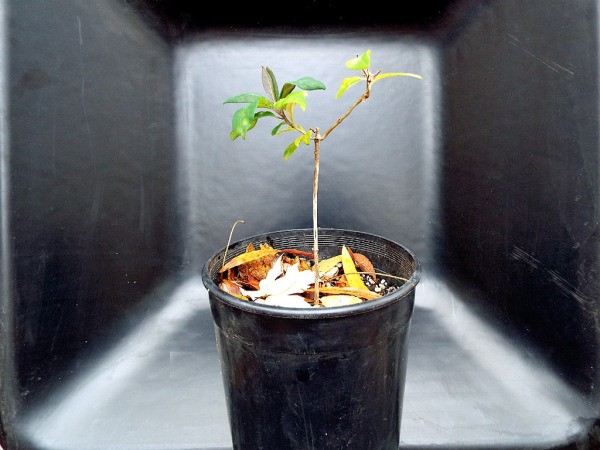
If you were to drive by my sister's honeysuckle on a hot summer's afternoon and smell its gorgeous scent and see its showy blooms, you might think,
'I would love to have one, but I have no where to grow it". Chances are you might be wrong.
I do not have a picture of a mature specimen. I found a picture of what appears to be a wild honeysuckle with intertwined trunks growing in the ground and trained as a standard. Be sure to left click on the picture to enlarge it.
While looking, I found that Honeysuckles make beautiful bonsai. I'll give you one guess as to what I will be doing with a few of my rooted cuttings. Check this out!
Standard honeysuckle can be kept in large containers for many years. Keeping them pruned to five or six feet is ideal. They can be placed on a sunny porch, patio, or balcony where they will be close by for enjoying. And as they are very hardy, there is no need to bring them inside for the winter.
Pictured below is one of my a three year old plants being grown as a standard.
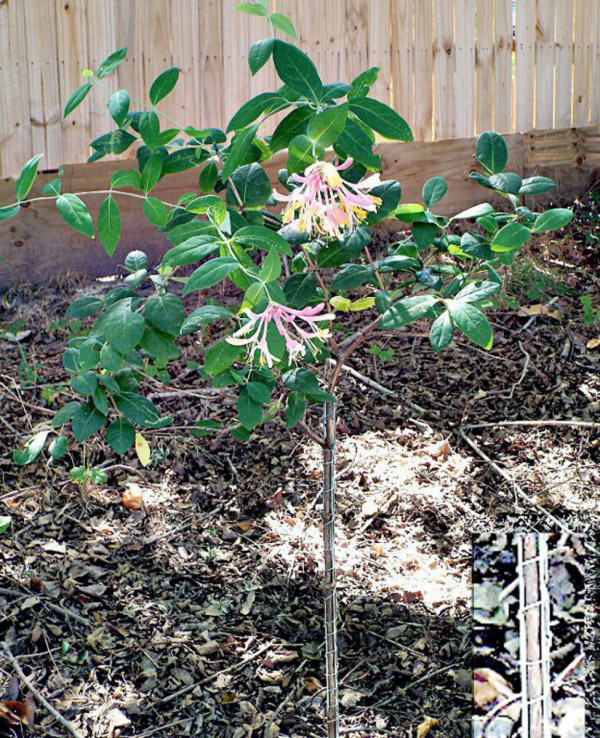
Add your voice! Click below to comment. ThriftyFun is powered by your wisdom!
Ever heard of 'Woodbine?
Interestingly, all my life I thought Honeysuckle was a vine. After submitting this post, I did a bit of research. I find I have been mistaken.
Should you care to know:
There is the true vine. Ivy is such a vine. It attaches itself to a host, usually a tree, by means of suckers. These suckers are what gives the ivy its ability to climb a host. The watermelon is a vine. It attaches itself to any available support by means of tendrils. The ability of a plant to climb by means of suckers or support itself by means of tendrils is what qualifies the plant to be placed in the botanical category of vines.
Honeysuckle does not climb or support itself by means of suckers or tendrils. It climbs a support by wrapping itself around the support in a helical fashion. This characteristic puts the honeysuckle in the botanical category of 'bines'.
The honeysuckle bine (sounds strange, doesn't it?), can not be grown into a tree. No matter how it is trained, it will remain a bine. It can be trained to grow into a 'tree form'. This 'tree form' is referred to by horticulturalists and agriculturalists and master gardeners worldwide as a 'standard'.
Very interesting! I love to learn stuff like this. I have a honeysuckle 'bine' and just took the growing habit for granted.
Wow! I love it. I'm sure it would grow very tall here in Lakeland, mild winters, just occasional frosts. I will have to try this. Very lovely.
Add your voice! Click below to comment. ThriftyFun is powered by your wisdom!